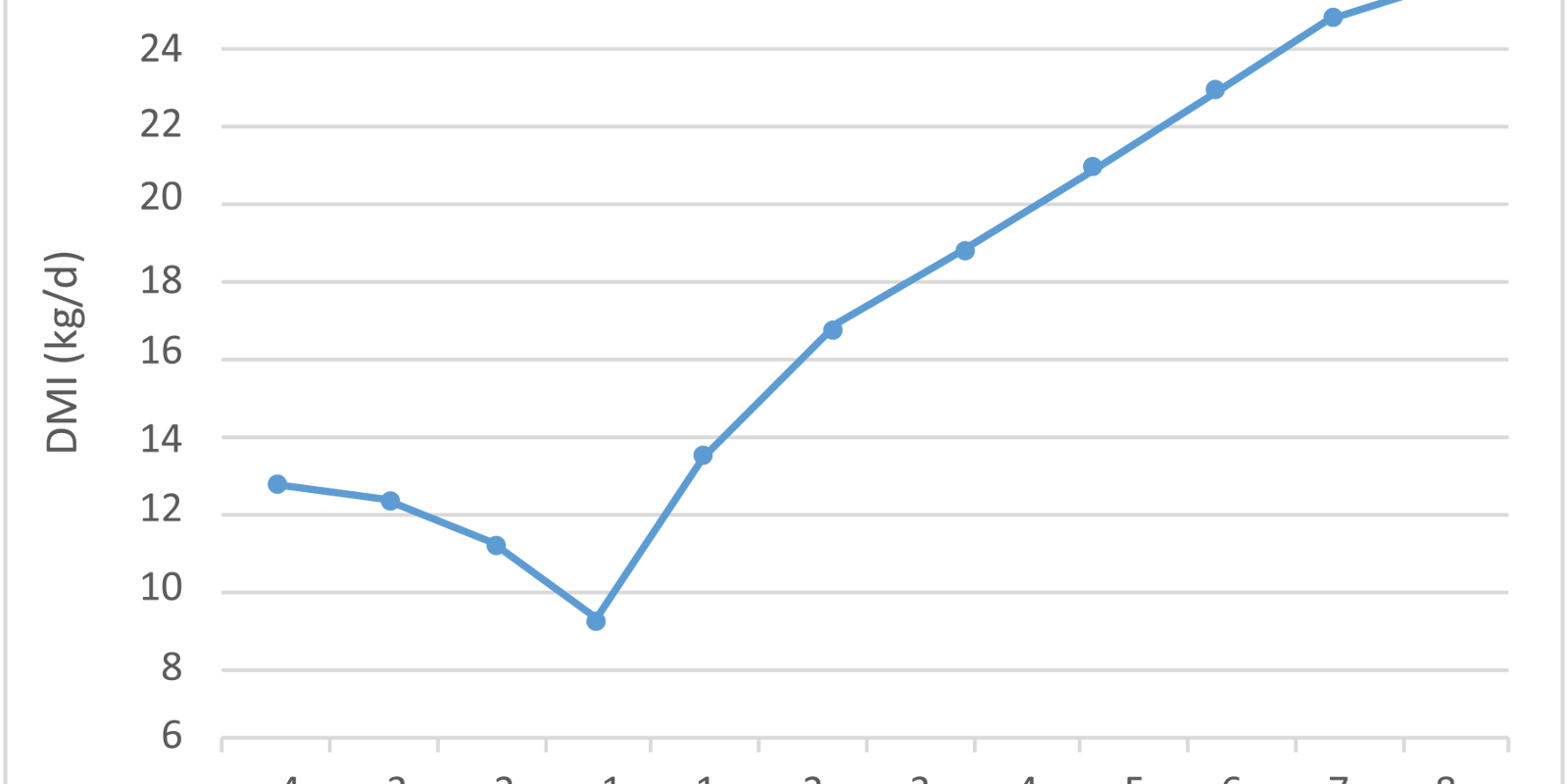
Goals that a producer can set for his business:
- A cow must calve comfortably
- Colostrum must be of good quality for a healthy calf
- Good rumen adaption
- The cow must be healthy without metabolic disturbances such as milk fever, ketosis, etc.
- Good milk production
- Reduce the drop in body condition
- Fertility: reduced days to first AI and improved conception
- Increase in profit
De Heus identifies 4 phases in the dry period of a dairy cow:
- Drying-off phase: The last weeks of lactation
- Far-off phase: First 4 - 6 weeks during the dry period
- Close-up phase: Last 2 - 3 weeks of the dry period
- Early-fresh phase: First 2 - 3 weeks during lactation
Although all 4 phases are important, for the purpose of
this article, we focused mainly on the Close-up phase
A critical period – the Close-up Phase
Why it is important to give the dairy cow a good ration during the close-up phase:
At this stage the dairy cow is ready to calf. Her body goes through various changes, both physically and hormonally. Her dry matter intake (DMI) decreases drastically while her dietary requirement increases drastically. During the last week of prepartum (for calving), the foetus and placenta nutrient needs are the highest (Bell, 1995), but the cow's DMI decreases drastically by about 30% in the last 7 - 10 days before calving. See Graph 1
Graph 1 Illustrate dry matter intake before and after calving. (Grummer, Ric R. Optimization of Transition Period Energy Status for Improved Health and Reproduction, 2006)
Most foetus growth also occurs in the last 3 months of gestation. The energy need of pregnant cows reaches 1,3 to 1,5 times the maintenance requirement until the end of gestation (Quigley and Drewry, 1998). The growth of the foetal tissue follows an exponential curve that begins in the last trimester (Bell et al., 1995; House and Bell, 1994). What should also be taken into account in conjunction with the decrease in DMI and increased nutritional needs is that the farmer must also adjust the dairy cow's rumen for the transition to the lactation ration From the above-mentioned, it can be concluded that the producer must establish a good strategy to manage and overcome the constraints that occur in this phase. This is where De Heus’s PreLacto concept becomes relevant. The producer and a De Heus Technical Advisor can join hands to get the best outcome. That's why De Heus's motto is "Powering Progress", because by working together we can achieve the best results.
What can be done to overcome the constraints in this phase?
- Dry matter intake:How will it be managed to ensure that the dairy cow has a good start when she comes into milk? It is known that there will be a decrease in DMI during the last 3 weeks before calving. It is therefore extremely important to keep the DMI as high as possible. By applying good feed trough management and ensuring that food stays fresh, we can ensure that this goal is achieved. One reason for the decrease in DMI is that the foetus grows and occupies a lot of place where the rumen would usually lie. The roughage used must contain sufficient fiber to ensure that the capacity is retained in the rumen and also to prevent displaced abomasum.
- Supply in nutritional needs:
- The adaption of the Rumen:
With the use PreLacto Dry Period Plan, the rumen starts adapting to the concentrated feed. After calving, the lactating cow will start to eat more concentrated feed, they will have adapted quicker to the change in the ration and rumen microbe’s population will be changed successfully. One important point to mention is that you cannot give 2 – 3 kg PreLacto before calving and then expect the cow to be able to handle 10 -12 kg of concentrated feed in the parlour. This is where the Early-fresh Phase becomes important. Try to adjust the cow systematically to higher feed intake during the Early-fresh Lactating phase.
At the Kleinplaas dairy farm in the Groot Brak area the principles of dry cow feeding were implemented and De Heus took the opportunity to apply the PreLacto concept to his animals. Kleinplaas has Jersey cows in milk and the animals that followed the PreLacto concept while being monitored, and daily milk production after calving was recorded. The animals that did not follow the PreLacto concept were already in milk could be compared to the animals who did not follow this concept.
According to Frikkie Kapp, farm manager at Kleinplaas, he saw a decline in days up to peak. This can be attributed to the better adaptation of the rumen. He also observed that the cows were in better condition when calving and they maintained their condition better during in lactation. He also saw an improvement in the overall health of his calves as a result of the improvement in the quality of the colostrum.
The last 2 - 3 weeks of the Dry Period are critical to the success
of the subsequent lactation.Good management during this period will ensure that animals:
- Are in the correct condition when calving
- Less problems with calves
- Better quality of colostrum with this resulting in increased immune system in calves
- Improved milk production in subsequent lactation

